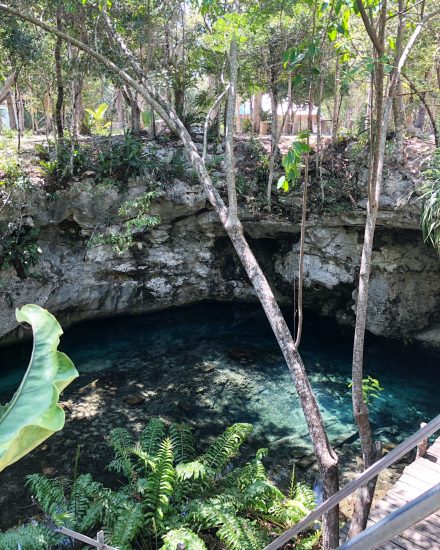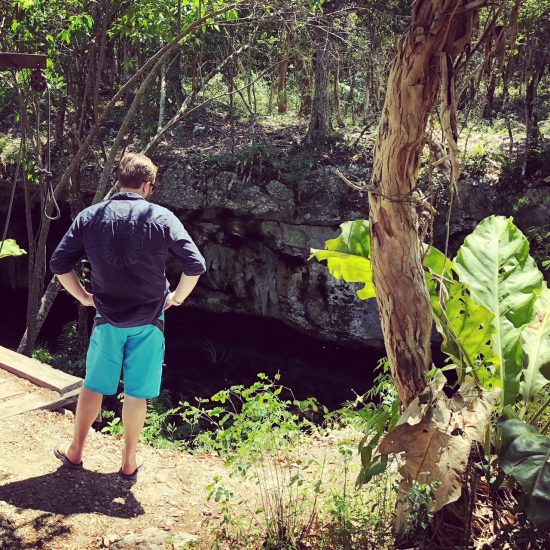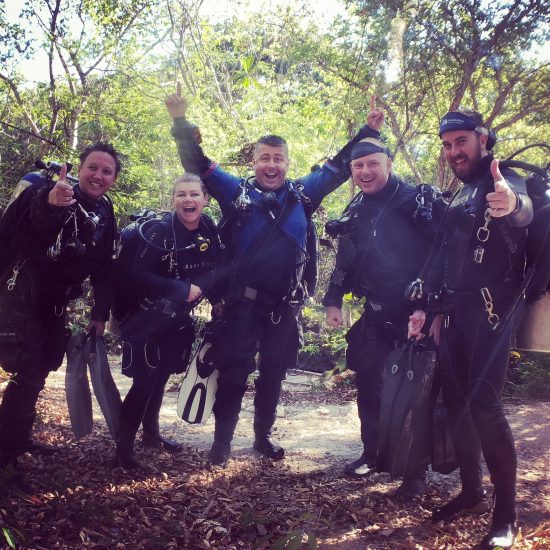








Cave diving...
If you had asked me only last week about cave diving, my answer would have been very clear, I am not a cave diver nor do I have any interest in becoming one. Oh my, what a difference a week can make!
The Location
As part of the SSI Product Development team, recent work resulted in me finding myself en route to Mexico to visit the “Cenotes”.
The word “Cenote” actually refers to any subterranean chamber that contains permanent water. Some Cenotes are vertical in structure with great shafts of water leading up to the surface. Other Cenotes can stretch horizontally for great distances. Many of these Cenotes are connected by vast networks of underground caves and passages, extending hundreds of kilometers, to form some of the largest cave systems in the world.
The Yucatan Peninsula on the east coast of Mexico is literally littered with Cenotes and is probably one of the most famous places for diving these amazing environments.
The History
Millions of years ago, the Yucatan peninsula was actually a thriving submerged reef. It was during the Ice Age that the water table dramatically dropped and this low latitude region became exposed. The corals died and the jungle grew.
Parts of the very porous coral limestone were dissolved over time by the acidic rain water and created a system of passageways, caves and sinkholes. These caves and passageways became home to thousands of geological formations called Speleothems.
This family of secondary mineral deposits contains what we know as Stalactites and Stalagmites. Stalactites are found hanging from the cave ceiling, whereas Stalagmites grow from the cave floor upwards.
When the Ice Age came to an end and the glaciers reseeded, the water table once again rose by up to 100m. The rising sea levels caused these cave systems to be flooded thus preserving all that was inside them.
The Diving
These remarkable Cenotes understandably attract many scuba divers of all levels to come and explore them year after year. Divers with no cave training are limited to guided dives with experienced Cenote guides in the daylight zone. This means that they cannot simply explore on their own. They follow their guide along established lines with easy access to the surface. Personally, I had no previous cave training and so this was the side of the Cenotes that I was to see.
Connecting one Cenote to another are a series of passageways. These connecting passageways do not have permanent lines and are not easily spotted to avoid providing the temptation for the untrained diver to detour! (Divers like me!) For safety reasons, those connections are left hidden, only the well trained cave divers would use these.
Correct Equipment
It is important when diving in an overhead environment to use the correct equipment. All Cavern Divers should have access to three light sources.
The first light source is the natural sun light, that we had plenty of! The second light source, was provided by my Mares DCT Canister Lamp. Its 12 degree narrow angle beam worked beautifully in this environment providing me with a great view of the submerged chambers whilst enabling me to easily communicate with my team mates. With a maximum run time of 27 hours on the lowest setting, I had great confidence that I was not going to be left in the dark! As the canister lamp sits on top of your hand via a “Goodman Handle” it also meant that my hands were free to use my camera to try and capture some memories of this amazing diving experience.
The third light source was a small back up lamp I had secured in my pocket. I chose to carry the Mares EOS 3RZ. This compact and lightweight lamp is USB chargeable and on full power has a burn time of around one hour. More than enough for this type of Cavern Diving. It is small enough in size that you don’t even notice that you are carrying it!
Even though the majority of the Cenotes are relatively shallow, I chose to dive in my double tank configuration, with my Mares XR Donut Bladder Twin Tank Wing, XR heavy harness and 25XR DR back gas regulators. In any type of overhead environment, having redundancy and reliability in terms of gas and equipment is always recommended if not mandatory.
The Overall Impression
It was during my time in Mexico that I realized my urge to delve deeper into this tantalizing overhead world was showing its face. It is natural that divers want to continue to develop their skills in a new environment and I was no different! With the appropriate overhead training, I could spend years exploring these systems, and many people do.
This type of exploration dive would require the use of specialized equipment and techniques, like sidemount, redundant light systems, cave spools and reels, and even underwater propulsion vehicles to explore known areas and discover new ones. For now, my time in Mexico was done and I had had only but a taste of what this area could offer. This trip made me realize a few things:
 Cat
Cat 16th April 2018
16th April 2018 Dos Ojos Scuba, Akumal, Quintana Roo, Mexico
Dos Ojos Scuba, Akumal, Quintana Roo, Mexico